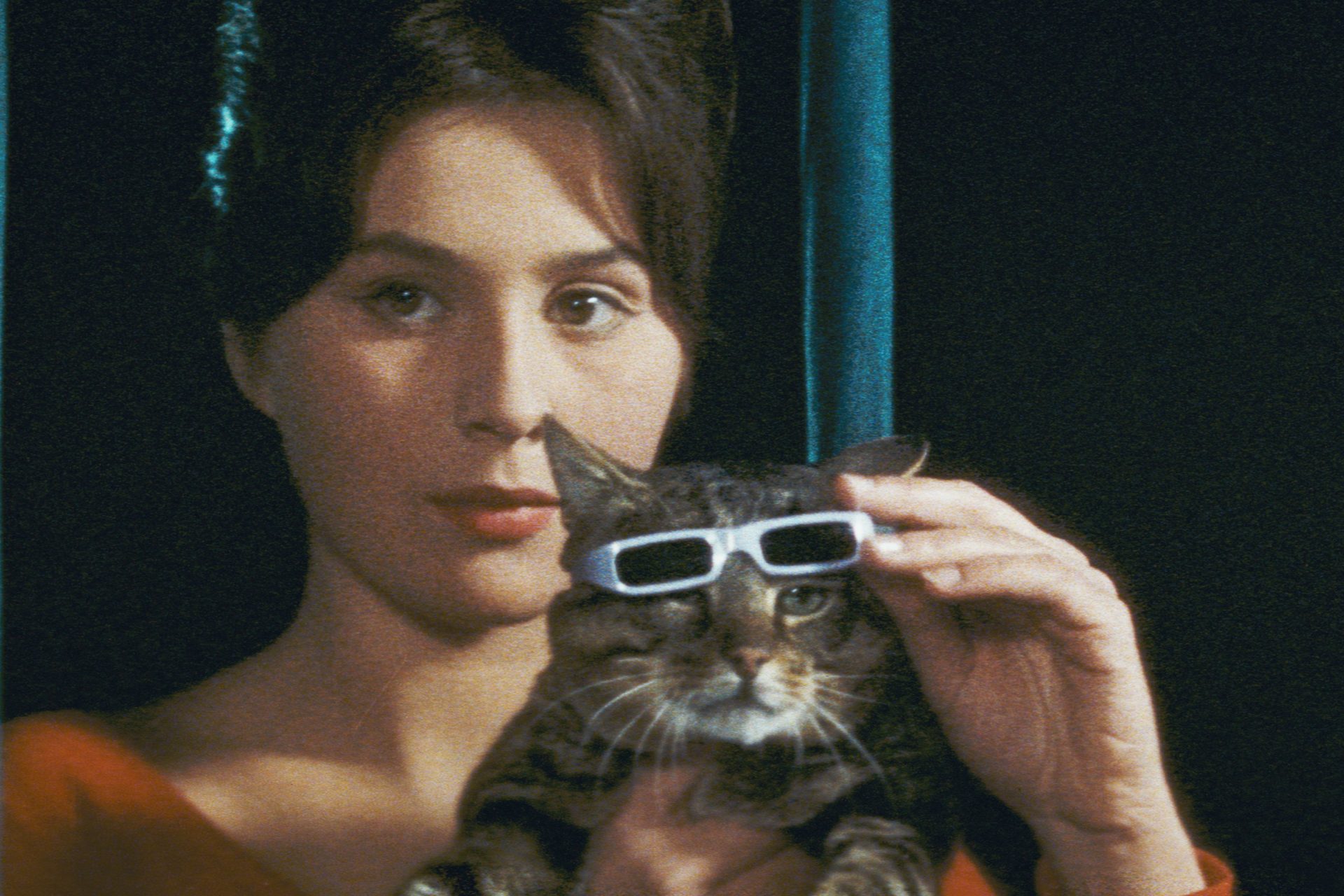
I recently watched a newly remastered version of the Czechoslovak film The Cassandra Cat (1963). It is a cutting criticism of Stalinism through a cat who wears tiny sunglasses.
In the film, the strangulating role of the bureaucracy in 1960s Czechoslovakia was clear to school teacher Robert, whose attempt at livening his pupils’ imaginations with playful lessons is curtailed by the drab, humorless school director Karel. But life in the village is thrown into disarray when magic circus cat Mokol visits town. In a flash, when his tiny sunglasses are lifted, the villagers explode into colour: those well-meaning and in love turn red, the unfaithful yellow, and liars, careerists and the spineless (and therefore bureaucrats) purple. The result is chaos. When everyone can see where you really stand, allegiances are broken, and new ones are forged.
Karel, in Stalinist fashion, leads a mad race to liquidate the cat. Robert, a layer of villagers, and Robert’s schoolchildren do everything in their power to save it, including strikes, demonstrations, and a propaganda campaign. Little Mokol is a revolutionary. For in any repressive regime, telling the truth usually is.
This film could only be made following the Khrushchev Thaw. Any art criticizing the bureaucracy under Stalin was illegal. But the relaxing of censorship was only a temporary concession to distance the new regime from the last. The film would be banned after the 1968 Prague Spring was brutally crushed.
The Cassandra Cat is a cornerstone of Czechoslovak New Wave, of which director Vojtěch Jasný was a pioneer. Jasný’s father was killed in Auschwitz, and he believed communism was the tool to end the evils of Nazism forever. In 1952, Jasný made a documentary called The Extraordinary Years praising agricultural collectivization in the style of other Stalinist propaganda. But his travels showed him the farce that was “Soviet realism.” He said, “When I came back from the Soviet Union and China I decided that I will never more make dogmatic or stupid films. I promised this to myself and I found this courage. You believed that socialism is good but, I have seen that in the Soviet Union they murder people … I stopped believing in this stupidity and I decided we will make our own Czechoslovak socialism if we can, and we will do it humanely and properly.”
Check out The Cassandra Cat if you want an original, artistic view of life under Stalinism, and how the revolution will sweep all bureaucrats aside.

